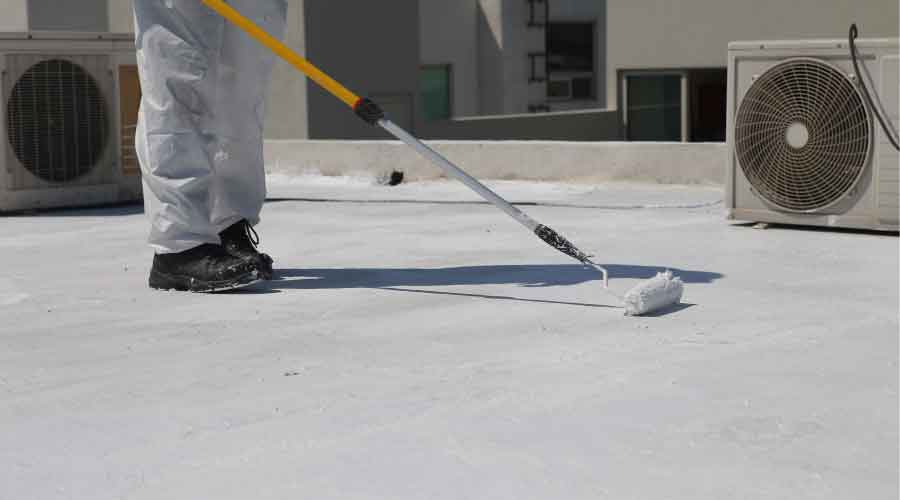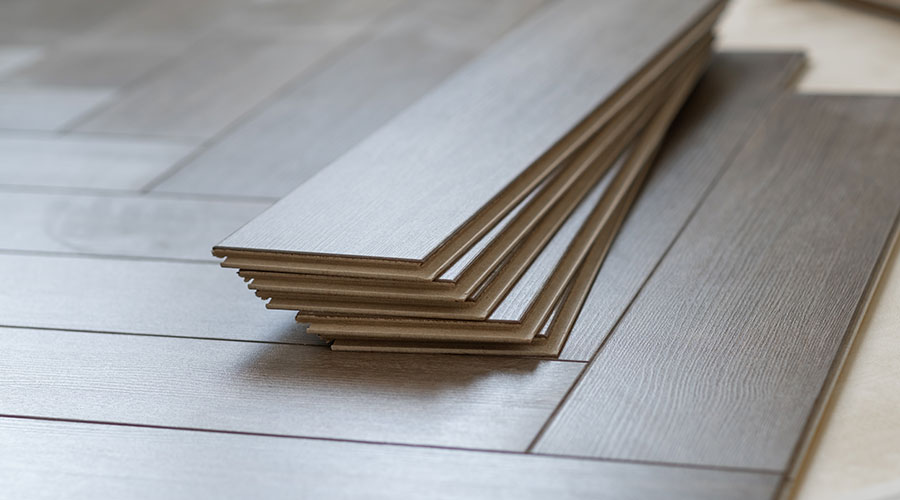4 Types of Roof Coatings: How to Pick the Best for Your Facility
Match the roof coatings with the best properties for your particular application.
This article was first published in 2020 and has been updated to reflect current information.
There are several types of coatings available on the commercial roofing market. The material formulations, uses, and application methods are all different, so facility managers should examine the manufacturer’s material data sheets to determine which product is suitable for their specific project.
This article covers four roof coatings: acrylic, silicone, polyurethane, and an asphaltic rubber membrane system. Not all coatings are acceptable or compatible on all roof surfaces. Also, all pre-application preparation should be completed in accordance with the roof coating manufacturer’s requirements.
1. Acrylic coatings: Acrylic coatings were originally developed to provide ultraviolet protection for sprayed urethane foam applications. These types of coatings are now used on a variety of roof membrane surfaces, including single-ply membranes and metal systems. Acrylic-based materials provide excellent resistance to radiation and hail damage and have the inherent flexibility required to withstand dimensional instability of most roof membrane surfaces. Some studies have indicated that properly formulated acrylic coatings can reduce surface temperature as much as 20 degrees F when exposed to direct sunlight at 85 degrees F.
Acrylic coatings are manufactured of 100 percent acrylic and can be applied in one or more coats. Most manufacturers provide warranties based on the coverage rates; extended warranties require additional coverage. Acrylic coatings should not be applied in freezing temperatures or when precipitation may occur within a specified period from application. Cure time of these products is highly weather-dependent and cold weather or high humidity will impede curing. Ideal curing takes place with warm weather and low humidity.
Acrylic coatings are economical, provide excellent reflectivity, and are easy to work with. These coatings also, however, lose mil-thickness from weathering, require application in ambient temperature of above 50 degrees F, and cannot withstand ponding water.
Several acrylic coating manufacturers now offer instant-set materials. This reduces the cure time of the acrylic coating to a few minutes, thereby eliminating the possibility of coating run-off if there is precipitation directly after application.
2. Silicone coatings. Silicone coatings are manufactured with a high solids’ dispersion of 100 percent silicone. It is a highly elastic material that provides excellent adhesion to the existing surface. Silicones provide good weather resistance and rarely become hard or brittle. Silicone coatings have gained market share on the commercial roof market in the last decade. The rise in applications is primarily due to the material’s ability to withstand long-term exposure to ponding water, as most of the other coatings cannot withstand ponding water. Silicone coatings also provide excellent ultraviolet protection in extreme temperatures and harsh environments and can resist oxidation. Silicone is available in a variety of colors and provides high reflectivity and emissivity ratings.
Some of the drawbacks are cost, application requirements, and the fact that there are only a few materials – other than silicone – that can be applied directly to the silicone surface. Silicone also holds dirt on the surface and loses reflectivity over time.
3. Polyurethane coatings. Polyurethane coatings were initially developed to be applied over sprayed-in-place foam roofs. They are now used as coating applications over a variety of existing roof membranes. Polyurethane coatings provide the best rates of all coatings for impact resistance and for foot traffic. There are two types of polyurethane roof coatings: aromatic and aliphatic. These types of materials are typically used in combination of base coat and topcoat. The base coat material is durable but does not offer high UV resistance. The aliphatic coating is used as a top surface because it is UV stable, stays clean, and holds color longer than other coatings.
4. Fluid-applied asphaltic rubber membrane system. Technological advances and labor shortages have led to the development of fluid-applied materials that can effectively extend the service life of the existing roof system at economical rate. An asphaltic rubber membrane system has been developed that can be applied in cold-process fluid-applied applications in use for life extension repairs. The asphaltic rubber material combines the elastic properties of rubber with the waterproof/weatherproof characteristics of a highly refined emulsified asphalt. The resulting formulations are proprietary materials that form a fully adhered monolithic, seamless, rubber membrane. The resulting membrane can be applied to range from 20 mils to 200 mils dry.
Unlike coatings that only provide a film surface or adhesives that require reinforcements for waterproofing capacity, the asphaltic rubber forms a monolithic, seamless membrane that provides instant waterproofing/weatherproofing capabilities. The use of these materials in combination with coatings provides a long-term, economical repair system.
Regardless of which roof coating facility managers choose, as with all liquids and adhesives used in the roofing industry, proper on-site material storage is important, and all of these products have a specified shelf life.
John D’Annunzio (john_paragon@ameritech.net), president of Paragon Consultants and Paragon Roofing Technology, Inc., has more than 20 years experience as a construction consultant specializing in roofing and waterproofing materials application and field performance. He has written four books about roofing.
Related Topics:













